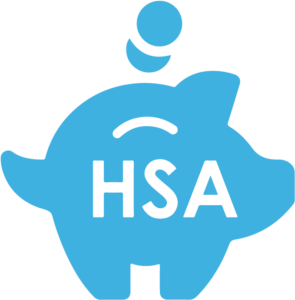Are you getting the most out of your Health Savings Account (HSA)?
HSAs have been with us since 2003. They are gaining in use and popularity. An HSA must be coupled with a high deductible health plan.
2021
| Type of Coverage | Under Age 55 | Age 55+ Catch-up | Minimum Deductible | Maximum Deductible |
| Self-only | $3,600 | $1,000 | $1,400 | $7,000 |
| Family | $7,200 | $1,000 | $2,800 | $14,000 |
2022
| Type of Coverage | Under Age 55 | Age 55+ Catch-up | Minimum Deductible | Maximum Deductible |
| Self-only | $3,650 | $1,000 | $1,400 | $7,050 |
| Family | $7,300 | $1,000 | $2,800 | $14,100 |
Health Savings Accounts were enacted to encourage individuals to save for future medical costs. Fidelity studies show medical expenses as one of the largest expenses individuals will have in retirement. The average cost of medical expenses during retirement is $250,000 including health insurance premiums.
HSAs allow for monies to accumulate and carry over from year to year. It isn’t a ‘use it or lose it’ like the Flexible Spending Accounts.
Employer provided HSA plan vs an Individual plan.
Many employers are providing HDHP with an HSA option. Some employers are contributing to the HSA on behalf of the employee.
Having a plan of your own, allows you to make contributions that are tax deductible as well.
The rules that govern either plan are similar. What is different? Contributions made by payroll deduction also reduce FICA Taxes! A savings of 7.65 % for every dollar contributed.
Direct contributions are still income tax deductible and do reduce your Adjusted Gross Income (AGI).
Catch up provision for individuals 55 and over.
You may have a family plan that allows you $7,200 of contribution. You can add an addition $1,000 for 1 spouse over 55.
However, if both spouses are over 55, you need to open an account for the other spouse. You can contribute $1,000 for the catch up provision.
The HSA contributions can be made to either account as long as the total doesn’t exceed the family contribution of $7,200 + $2,000 catch up provision.
However if one spouse has a payroll deduction for HSA contributions, maximize your contributions there. You avoid the 7.65 % FICA tax.
Which Bucket do you fill, company HSA or company 401(k)?
You have limited dollars to fund the 401(k) and the HSA. Which comes first?
- Fund the 401(k) to the company match.
- Fund the HSA to the limit allowed.
- You receive an additional 7.65% tax savings on contributions to the HSA.
- You can access the money if you have medical expenses to pay, 401(k) has penalties or loan costs to access.
For example, Meghan, a single mom has $10,000 she can put into company programs. The company matches up to 6% of her contributions. 6% of $50,000 salary is $3,000. She makes a contribution of $3,000 to her 401(k) – the company adds $3,000.
Meghan has $7,000 left to contribute to the HSA for a family program.
If Meghan had $12,000 to contribute to the company programs, she could add the additional $2,000 to the 401(k).
Adult Children on your company health insurance.
- A child that is 19-24 and a fulltime student can be counted as a dependent. As such, medical expenses can be covered from the family HSA.
- Non-dependent children can be covered on their parents health insurance until age 26. However, you can’t cover their medical expenses from the family HSA. But you can open an HSA for the non-dependent adult child.
Itemize Medical Expenses vs HSA Distribution.
In a year where you have heavy medical expenses, you may want to itemize your medical expenses on your tax return. In that case, you don’t want to reimburse your medical expenses from the HSA. Because you can do one or the other, but you can’t double dip. You would have to have sufficient cash to pay medical expenses out of pocket.
 Spenders vs. Savers.
Spenders vs. Savers.
Spenders make their contribution to their HSA. They also have medical expenses they can’t afford to pay out of pocket. They ‘spend’ their contributions made to their HSA.
Savers make their contributions to their HSA. They pay out of pocket for any medical expenses. They allow their contributions to accumulate and reach investable levels. Savers will likely carry a higher HSA account value into retirement.
Save your Receipts from Medical Expenses.
You can delay reimbursement of medical expenses, for months even years. You pay the provider out of pocket like the saver we discussed earlier.
Scan the receipt into your phone or computer. Or create a hard copy folder for unreimbursed medical expenses.
When you want to take a trip or a cruise and you are a little short on cash, turn in some unreimbursed medical expenses.
This works well to defer HSA disbursements when you have working income to cover medical expenses. You can defer reimbursement to retirement years when you cash flow may be less.
20% Penalty.
Money in your HSA must be used on qualified medical expenses. Otherwise, it is included in income and is subject to a 20% penalty.
After age 65, non-qualified medical disbursements are not subject to the 20% penalty, but they are still included as income.
Qualified HSA Contributions.
HSA Contributions can be made through payroll deductions. They can also be made individually. Unlike IRAs, you do not have to have earned income to deduct HSA contributions.
However, if you have Medicare coverage, you are no longer eligible for an HSA. Remember, HSAs must be coupled with a High Deductible Health Plan. Medicare does not meet the minimum $1,400 deductible.
If you are 65 or older and covered by an employer HDHP you do not have to be covered by Medicare. In that situation, you may make contributions to your HSA. An employee may choose to remain on employer health insurance coverage to continue to cover his/her family.
When on Medicare, you can’t make contributions to an HSA. You can make contributions to a Medical Savings Account (MSA). This may be deductible for your state taxes. In Idaho it is up to $10,000.
In Idaho, don’t use your MSA or HSA on health insurance or long-term care insurance. These premiums are already deductible on your Idaho tax return.
Life of the HSA.
When an HSA owner dies, the account can be passed to the spouse as beneficiary. This works like an IRA, the account becomes the spouse’s to be handled as their own.
A non-spouse beneficiary ends the HSA. The beneficiary is allowed to pay medical expenses for the deceased up to 12 months after death.
The remainder of the HSA account is distributed and taxed to the beneficiary.
Many rules govern the use of HSAs. Use them to benefit yourself- don’t get tripped up.
See also:
Is a Health Savings Account For You?
FSA or HSA- Which Should You Use?
Pros and Cons of FSAs and HSAs- Part 1
Pros and Cons of FSAs and HSAs- Part 2


 Spenders vs. Savers.
Spenders vs. Savers.